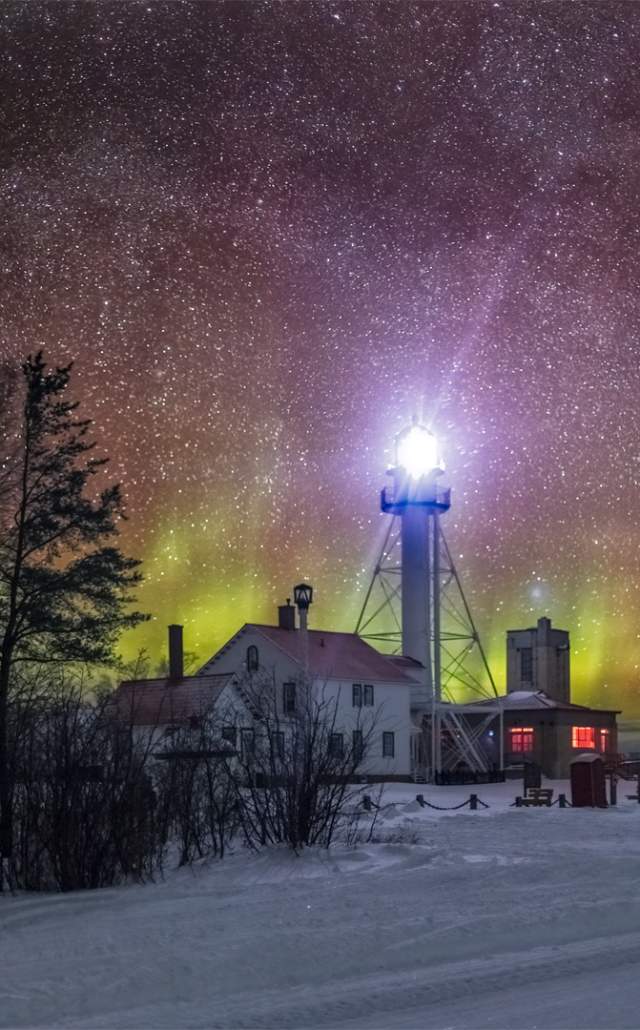Great Lakes Shipwreck Museum: Learn haunting tales of Lake Superior’s raging storms
The Great Lakes Shipwreck Museum, located at Michigan’s Whitefish Point Light-Station, is one of Michigan’s most popular cultural tourism destinations. The museum’s world-class exhibits tell the story of the haunting world of Lake Superior shipwrecks. Hear the tales of ships and men who braved Lake Superior's raging storms, and watch captivating underwater films of shipwreck discoveries. In addition to the shipwreck exhibits, there are a variety of historic structures onsite including a light tower, lookout tower, fog signal building, lightkeeper’s quarters, crew quarters and surfboat house. If you love the Great Lakes and history, this museum is a must-see during your trip to the Upper Peninsula.
The museum complex is situated on the shore of Lake Superior at the end of N. Whitefish Point Rd. about 11 miles north of Paradise and is approximately a 1.5 hour drive from the Mackinac Bridge. Whitefish Point is the appropriate location for a museum of this nature since nearly 200 shipwrecks have been documented in the vicinity. Due to the large number of wrecks the area is known as Lake Superior’s Shipwreck Coast.
The emotionally powerful exhibits of the Great Lakes Shipwreck Museum are a true testament to the power of Lake Superior. They also highlight the challenges faced by Great Lakes sailors past and present. One of the most famous artifacts at the museum is the bell from the wreck of the SS Edmund Fitzgerald. This ship sank during a powerful storm in 1975; the exact reasons for its demise are still debated. In 1995 the bell was recovered from the wreck and has become a powerful memorial to the ship's crew.
In addition to the museum exhibits, you will also want to view and learn about the historical structures onsite including:
- Whitefish Point Light Station
The light station, constructed in 1861 during Abraham Lincoln’s administration, is the oldest active lighthouse on Lake Superior. This structure replaced a stone tower that was constructed in 1849 but wasn’t strong enough to withstand the severe winds in the area. - Lookout Tower
Built in 1923 as a 24-hour watch during the shipping season, it was abandoned in 1955 and later moved to its present location and restored. - Lightkeeper's Quarters
This two-story building was constructed in 1861 as a dwelling for the lightkeeper and his family — it housed Coast Guard personnel until 1970. In 1996, the structure was restored to 1920-era condition. It features period furnishings, descriptive panels, exhibits and artifacts. - Assistant U.S. Coast Guard Chief's Quarters
This two-story building was constructed in 1925 for the light station Chief and family. Currently, the first floor of the building is used as a theater that shows a video about the SS Edmund Fitzgerald. - Crews Quarters
This two-story building has been moved repeatedly throughout its history and was renovated in the 2000s. It is currently closed for overnight stays. For updates, sign up for the e-newsletter. - Boat House
This structure built in 1923 was moved to its present location in the 1950s and was restored in 2001. The building displays a full-size replica Beebe-McClellan 26-foot surfboat and historical exhibits. - Fog Signal Building
This brick structure was built in 1937 to replace the original fog signal building that was destroyed in a 1935 storm. It is currently used as a ground maintenance facility.
After visiting the exhibits and historical structures, be sure to check out the museum store. It features items related to maritime life on the Great Lakes including clothing, books, souvenirs, artwork and models.
Most guests during a visit also take advantage of the boardwalk to enjoy the view of Lake Superior and to access the rocky shoreline. On a clear day, you can even see across the lake to Ontario, Canada.
Whitefish Point is also the perfect location for viewing ships on Lake Superior. It marks a critical turning point for ships heading to or from the Soo Locks in Sault Ste. Marie.
Additionally, the area is a popular bird-watching location which supports diverse species year-round and is a premier migration hot-spot in Michigan. Notably, it is a critical habitat for the piping plover. To learn more, be sure to visit the Whitefish Point Bird Observatory which is located adjacent to the museum complex.
You can easily spend several hours viewing all of the exhibits, historical structures and strolling along Lake Superior.

